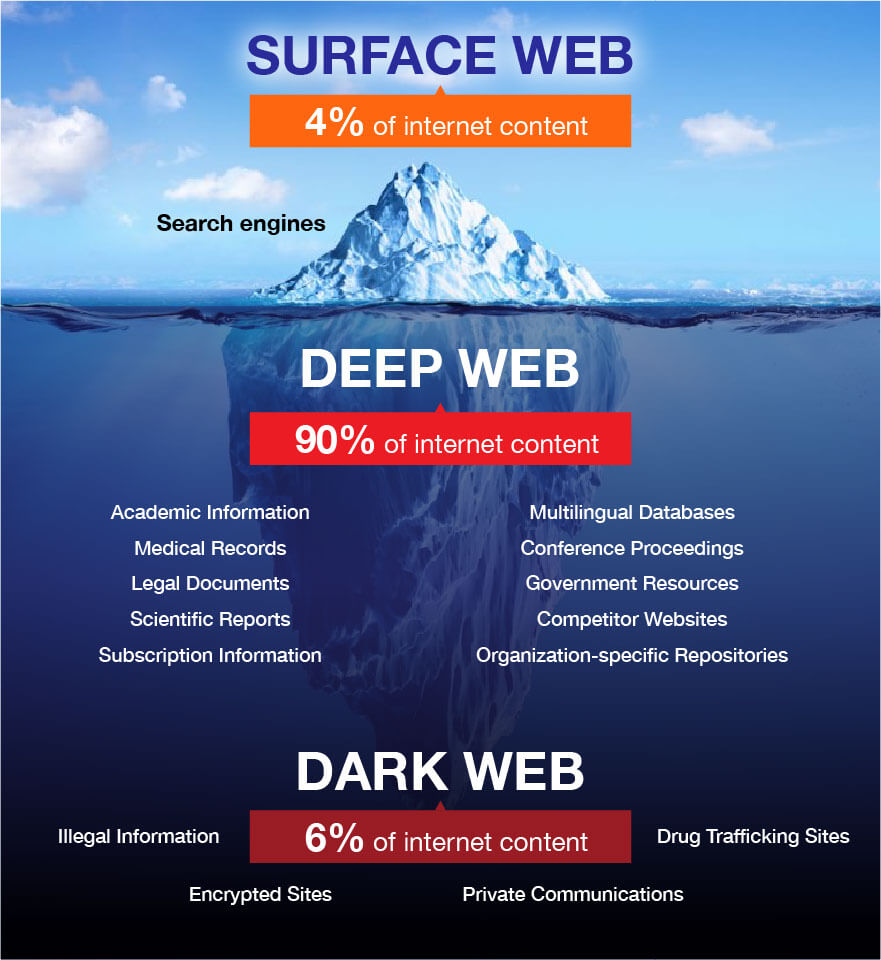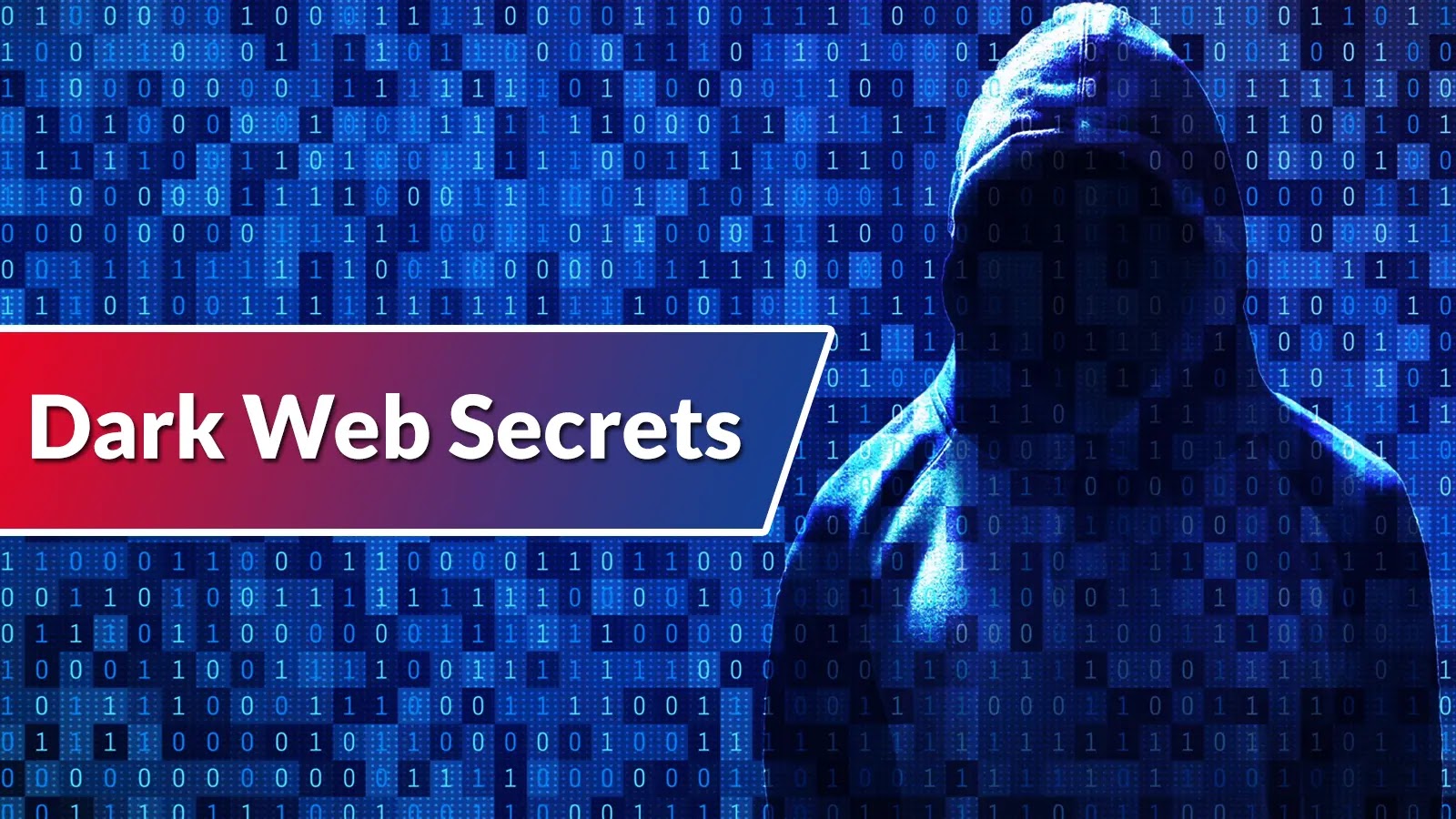Dark Web Secrets: Have you ever wondered about the mysterious parts of the internet? Welcome to the dark web.
This uncharted digital territory, inaccessible through regular search engines, is notorious for its association with illegal activities, like drug trafficking, firearm sales, and stolen data trading.
How did this underworld come to be, and what risks does it pose to you and your business?
Take a journey into the shadows of the dark web, where anonymity rules and practically anything is for sale.


Where did all of this Begin?
The origins of the technologies that enable the dark web, such as the Tor network, are surrounded by a veil of secrecy.
It appears that a diverse range of individuals and groups, both working independently and potentially together, contributed to its creation. While the exact motivations behind its inception remain unclear, it is believed that the creators aimed to provide a means for people to interact and share information anonymously, allowing them to evade government surveillance and restrictions.
Interestingly, the US military initially utilized the dark web in 1995 as a secure channel for transmitting sensitive information.
Over time, this technology became accessible to the public through Tor, enabling regular individuals to bypass censorship and browse the internet with anonymity. However, the true origins and purpose of the dark web still remain somewhat enigmatic.
So how do the dark web secrets keep under mystery?
The answer lies in the Tor (The Onion Router) network, which utilizes multiple layers of encryption to protect transmitted data.


Operating on the outskirts of the internet, it forms the foundation of the dark web—a collection of concealed websites that cannot be accessed through regular browsers and remains un-indexed by search engines like Google.
What makes it scary
The dark web operates without a central authority and is commonly associated with illegal activities.
The dark web’s anonymity makes it challenging to verify users’ identities, increasing the risk of scams and deception.
According to the Privacy Affairs Dark Web Price Index, it is possible for a thief to purchase enough personal data to assume someone’s identity for around $1,000.
The anonymity provided by the dark web makes it difficult to verify the identity of other users, increasing the risk of falling victim to scams or deception.
Therefore, it is essential to exercise caution and be mindful of the potential risks and dangers associated with the Dark Web Secrets.
The dark web and it’s perils: How does it affect enterprises?
You must be wondering why any legitimate, legally functioning business (such as yours) would be using the dark web. Unless you’re planning to trade illicit tools and services or stolen data, why on earth would your organization be even remotely affected by what happens in the dark web?
While it might seem like all you have to do is avoid ever visiting it, unfortunately, whether you frequent the Dark Web Secrets or not won’t determine if your organization’s data ends up on it. The dark web is home to “25.9 million breached Fortune 1000 business accounts and 543 million compromised employee credentials,” according to recent reports.
So what’s the major reason that enterprise data ends up on the dark web? Actually, there are a lot reasons:
- Insider threats: Internal individuals with access to sensitive information pose a risk when they have malicious intent to exploit it for personal gain on the dark web.
- Phishing attacks: Cybercriminals employ deceptive tactics to trick unsuspecting individuals into revealing their confidential information, which is often sold on the dark web.
- Software vulnerabilities: Knowledge about security loopholes and weaknesses in software are valuable commodities on the dark web, enabling hackers to exploit them for malicious purposes.
- Ransomware incidents: Malicious software encrypts valuable data, holding it hostage until a ransom is paid, with the dark web serving as a platform for ransom negotiations and transactions.
- Financial fraud tools: Fraudulent details, such as stolen credit card details and compromised accounts, are sold on the dark web, enabling financial fraud targeting individuals and enterprises alike.
- Fake credentials: False identification documents, counterfeit certifications, and forged qualifications can be obtained on the dark web, facilitating identity fraud within enterprises.
- Compromised employee accounts: Breached employee credentials are sold on the dark web, granting unauthorized access to enterprise systems and potentially compromising sensitive data.
- Targeted attacks: Covert and focused attacks are orchestrated on the dark web, leveraging its anonymity and resources to target specific individuals or organizations.
- Lack of cyber ethics: The dark web fosters a community where ethical boundaries are disregarded, enabling and promoting illicit activities with minimal consequences.
Breached data often ends up on dark web marketplaces
Dark web markets are popular sites to trade and acquire sensitive corporate data.
Employee and customer data—including personally identifiable information (PII), business credit cards and financial details, emails and passwords, company announcements that might affect stock value, and other data—can be purchased and sold.
It’s not unusual for private company data to end up on these platforms.
SpyCloud’s 2021 Breach Exposure of the Fortune 1000 research discovered 543 million breach assets on the dark web related to Fortune 1000 workers along with over 26 million plaintext passwords.
If you own a small business, it’s easy to think you’re not a target for hackers attempting to extort money from you or disrupt your operations.
However, smaller organizations may have fewer means to preserve and retrieve stolen data, or to protect themselves from assaults, making them more appealing targets for thieves aiming for a fast victory.
And assuming that you aren’t a target will simply leave you unprepared if you do fall victim to an attack.
You’re best bet is to assume that you are always a target, regardless of the size of your organization or the industry in which you operate, and take the required precautions to mitigate the harm that an attack can inflict.
Forewarned is forearmed: Some preventative measures for enterprises
In today’s digital landscape, businesses must be proactive in protecting themselves against evolving threats.
A crucial aspect is the need for a security solution that acts as a defense mechanism against potential breaches.
These solutions encompass various components such as firewall systems, intrusion detection and prevention systems, and encryption tools. Together, they form a comprehensive shield to safeguard networks, systems, and sensitive information from unauthorized access and malicious activities.
Endpoint Central, a vital element of a strong defense strategy, focuses on securing individual devices like laptops, desktops, and mobile devices.
It offers a range of capabilities, including application control, device control, ransomware protection, data loss prevention, browser security, vulnerability management, and patch management.
These features work together to ensure that endpoints are protected by deploying a combination of proactive and reactive tools.
Centralized management platforms like Endpoint Central play a crucial role in simplifying endpoint security management.
They provide a centralized interface for monitoring and managing endpoints across the organization.
With Endpoint Central, businesses can enforce security policies, monitor for potential threats in real-time, manage software vulnerabilities, and apply patches to ensure endpoints are up-to-date and protected.
Safe guard your digital presence with confidence, With Endpoint Central as your guardian, you can protect your data, applications, and business from the dangers lurking in the darkest corners of the internet.















